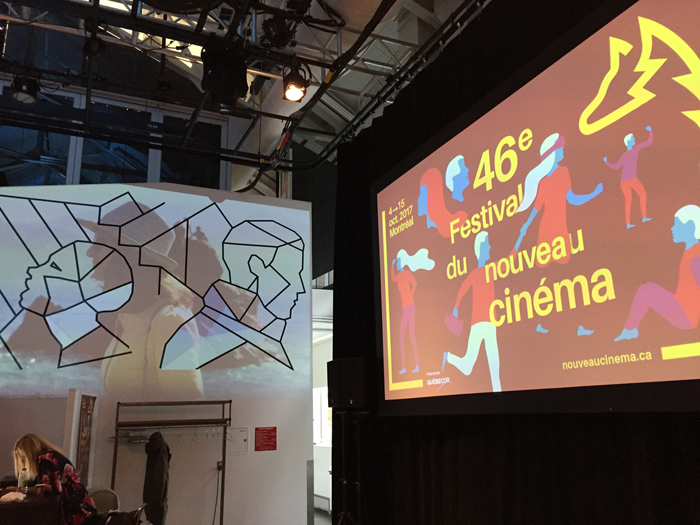This past October marked the 46th iteration of Montreal’s annual Festival du Nouveau Cinéma (FNC). Decades into its existence, the festival is continuing to grow; this year, FNC managed to secure the premiere of big name films, most notably Blade Runner 2049. The McGill Tribune looks at what succeeded, and what fell short.
'Call Me By Your Name'
Call Me By Your Name is a gay coming-of-age story, the aura of which I can compare only to some pleasant summer memory. Elio (Timothée Chalamet) is the precocious son of an academic (Michael Stuhlbarg) living in a small town villa in 1980s Italy. Oliver (Armie Hammer), an American grad student, moves in to study with the professor. Elio and Oliver’s first meetings are awkward as their respective Italian and American sensibilities clearly clash. Soon, however, a passionate relationship blossoms between them.
Luca Guadagi’s (A Bigger Splash) masterful direction depicts their lovely life in rural Italy, conveying bottomless nostalgia without being overbearing. This can also be credited to James Ivory’s screenplay.
Chalamet astounds, projecting equal parts naivety and intellectual fortitude, and Stuhlbarg’s singularly tender speech to Elio near the film’s closing is a highlight. Hammer, however, is the real star here; his presence is overwhelming from the moment he meets the family.
The film manages to eschew most clichés that plague queer cinema: There is no enemy, and no one is trying to pry the two apart. Instead, we get the sense that Elio and Oliver possess absolute freedom. They can wake up and decide to bike through the countryside, or swim in scenic rivers.
Not much happens in a larger, conflict-oriented sense—a fact reflected in Guadagni’s relatively static camera. What the camera chooses to highlight with its singular grace is Elio’s self-discovery, an arch so potent and affecting that a wave of disappointment crashes upon us as the lights turn on and we realize our time with these characters has come to an end, like the most beguiling of dreams.
'The Killing of a Sacred Deer'
The Killing of a Sacred Deer opens with Schubert’s grandiose Stabat Mater, and an extreme close-up of a human heart mid-operation, followed by a conversation about wristwatch straps. Within minutes, director Yorgos Lanthimos sets the tone for the film: Darkly eccentric, fearlessly macabre, and meticulously choreographed. However, underneath its spectacle, and despite some incredible performances, The Killing of a Sacred Deer falls short in depth and emotional resonance.
Colin Farrell plays a successful cardiologist, husband to his wife of 16 years (Nicole Kidman), and father of two children (Raffey Cassidy and Sunny Suljic). His seemingly-idyllic life is torn to shreds with the arrival of oddball teenager Martin (Barry Keoghan), and he is forced to make a choice with life-or-death consequences.
The Killing of a Sacred Deer is stunning and brutal—a masterclass in arthouse filmmaking, but its cold-heartedness and maddening horror make it truly difficult to sit through. The deadpan distance between the characters, while clearly intentional, leaves viewers floundering in an emotional void, offering no window for investment. When The Killing of a Sacred Deer reaches its fierce final act, there is little to do but watch the horrific action play out with the same cool indifference as its characters, a frustrating and hollow payoff after being trapped in a two-hour nightmare.
'The Square'
I’m not being facetious when I say that the most impressive thing about The Square is that writer-director Ruben Östlund (Force Majeure) managed to stretch its stale premise out over an interminable two-and-a-half hours.
Claes Bang stars as Christian, a cosmopolitan curator at a contemporary museum in Stockholm. In an attempt to revive his museum’s waning attendance, Christian acquires a new exhibit called “The Square”. At a staff meeting, however, he is told by two press relations people—the kind of guys who would describe themselves as “influencers”—that market research indicates a ridiculous advertisement campaign is needed in order to turn a profit. It’s at around this point that the film begins to cave in. Beautiful cinematography and an exhilarating set piece aren’t enough to distract from the picture’s most apparent issue: A lack of subtlety.
Whether it’s the lampooning of the commoditization of art, the homeless people resting on the museum’s steps, the janitor who accidentally cleans up an experimental piece of art featuring dirt, or—I kid you not—the bonobo who can draw, we are spoon-fed with such frequency that the satire loses its sharpness. By the end of act one it is apparent that the film has beef with the elitist contemporary art scene. Östlund continues to belabour this point until the film moves from thought-provoking to thought-domineering. The film ends up resembling one of the pretentious, overwrought, and clumsy pieces that Christian would install at his museum—the kind of piece that Östlund would sneer at.
https://www.youtube.com/watch?v=zKDPrpJEGBY
'Wonderstruck'
Please ignore the trailer that pops up when searching “Wonderstruck trailer” on YouTube. Todd Haynes’ newest feature has so much more to offer than its protagonists turning corners and children’s choruses singing David Bowie songs. Where the trailer promises a children’s movie—and a clichéd one at that—Haynes delivers a brilliantly nuanced film about childhood.
Adapted from Brian Selznick’s graphic novel of the same name, Wonderstruck juxtaposes the temporally distinct experiences of two runaway deaf children in New York City. The first, starring Oakes Fegley (Pete’s Dragon), moves from an incandescent, Stranger Things-esque ‘70s Minnesota home setting, to the ever-loving sunbaked streets of Harlem, New York. Complimenting these sensuous flashes of colour is a black-and-white take on the Big Apple of the ‘20s, starring formerly-unknown deaf actress Millicent Simmonds. Flighty, effervescent, and whimsical, this twin tale takes its cues from Charlie Chaplin-era silent film.
Intimately tied together from the start with an inventive use of cross-cuts, the two stories share much more than their characters’ disability. Lost in societies not built to accommodate their needs, Haynes’ two protagonists’ experiences of marginality fit well within the larger agenda of his filmography. Wonderstruck, though not a “children’s movie” per se, prizes a childlike innocence and honesty above all else. Powerful without being overbearing, Haynes’ latest is rousing, empathetic cinema at its finest.









